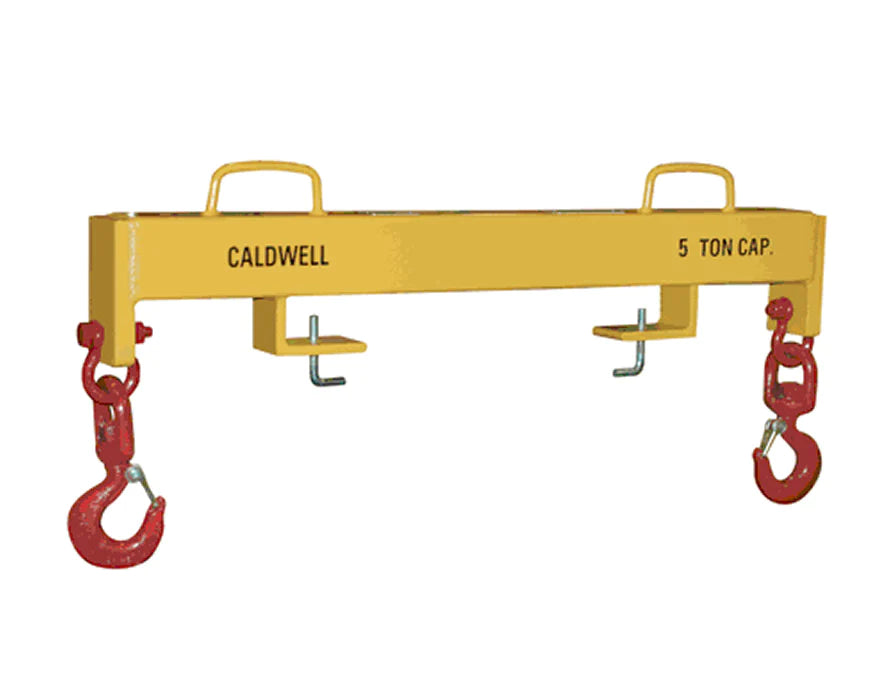858 305 8992

Safe Use of Forklift Hook Attachments
Caldwell forklift attachments are designed to enhance the capabilities of forklifts for specific tasks.

To ensure the safe use of Caldwell forklift attachments, follow these general safety guidelines:
-
Read the Manual:
- Always read and understand the manufacturer's manual and guidelines before using any forklift attachments. This information provides crucial details on safe operation, attachment capabilities, and maintenance requirements.
-
Proper Installation:
- Ensure that the forklift attachment is properly installed and securely fastened according to the manufacturer's instructions. Improper installation can lead to accidents or equipment failure.
-
Load Capacity:
- Be aware of the load capacity of the forklift attachment and make sure that the loads being lifted or manipulated do not exceed these limits. Overloading can compromise stability and lead to accidents.
-
Center of Gravity:
- Understand the changed center of gravity when using attachments. Adjust your driving and lifting techniques to account for any alterations in the forklift's stability.
-
Operator Training:
- Only trained and authorized operators should use forklift attachments. Ensure that operators are familiar with the specific attachment, its controls, and any operational considerations.
-
Inspect Regularly:
- Conduct pre-operation inspections of both the forklift and the attachment. Look for signs of wear, damage, or any loose or missing parts. Address any issues promptly before use.
-
Securely Attach Loads:
- Properly secure loads using the appropriate securing methods recommended by the attachment's guidelines. This prevents loads from shifting during transport and reduces the risk of accidents.
-
Clear Visibility:
- Ensure good visibility while operating the forklift with the attachment. If the attachment obstructs the operator's view, use a spotter or follow appropriate safety protocols to avoid collisions.
-
Operational Environment:
- Consider the operational environment. Be aware of any obstacles, uneven surfaces, or potential hazards in the area where the forklift attachment will be used. Follow safe operating practices in different conditions.
-
Emergency Procedures:
- Familiarize yourself with emergency procedures, including how to safely lower loads in case of malfunctions or power failures. Have a clear understanding of how to respond to emergencies.
-
Maintenance:
- Adhere to the recommended maintenance schedule outlined in the manual. Regularly inspect and maintain the forklift and its attachments to ensure they are in good working condition.
-
Follow OSHA Regulations:
- Familiarize yourself with and adhere to the relevant Occupational Safety and Health Administration (OSHA) regulations and guidelines regarding forklift operations and attachments.
By following these safety guidelines, operators can help ensure the safe and efficient use of Caldwell forklift attachments. Always prioritize safety and consult with the manufacturer or a qualified professional if there are any uncertainties or concerns.

Leave a comment